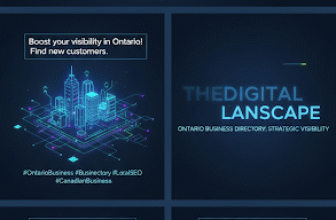
LED Lighting Market Share was valued at USD 62.56 Bn. in 2023 and the total LED Lighting revenue is expected to grow by 9.5 % from 2024 to 2030, reaching nearly USD 118.09 Bn.
The LED Lighting Market Share is experiencing significant growth, driven by an increasing demand for energy-efficient lighting solutions and advancements in lighting technology. Valued at USD 62.56 billion in 2023, the market is projected to reach USD 118.09 billion by 2030, registering a compound annual growth rate (CAGR) of 9.5%. This growth is being fueled by factors such as government initiatives supporting energy efficiency, the adoption of smart lighting solutions, and innovations in LED technology.
Get a Free Sample PDF of this Research Report for more Insights:https://www.maximizemarketresearch.com/request-sample/15214/
Market Estimation & Definition
LED lighting refers to light-emitting diode (LED) technology used in lighting fixtures to provide illumination. LEDs are semiconductors that produce light when an electrical current passes through them. Compared to traditional incandescent and fluorescent bulbs, LEDs consume significantly less power and have a longer lifespan. As a result, they are increasingly being used in residential, commercial, and industrial applications. LED lighting technology offers superior energy efficiency, improved color quality, and lower operational costs, making it an attractive solution for a wide range of industries ly.
Market Growth Drivers & Opportunities
Several factors are driving the growth of the LED lighting market:
-
Energy Efficiency and Sustainability: LED lighting is recognized for its significant energy savings. According to estimates from the U.S. Department of Energy, LEDs use 75% less energy and last 25 times longer than traditional incandescent lighting. As energy conservation becomes a priority, both residential and commercial sectors are increasingly adopting LED lighting to reduce energy consumption and carbon footprints.
-
Government Regulations and Incentives: Governments around the world are implementing favorable regulations to promote the adoption of energy-efficient lighting. These include policies mandating the transition to LEDs in public infrastructure and offering financial incentives, such as tax rebates, for individuals and businesses. This trend is particularly pronounced in developed markets like the U.S. and Europe, where energy-efficient lighting solutions are being integrated into urban infrastructure, including street lighting, commercial buildings, and public facilities.
-
Advancements in LED Technology: Continuous improvements in LED technology, including higher lumen output, better color quality, and enhanced lifespan, are fueling market growth. Innovations such as smart LED systems, tunable white LEDs, and human-centric lighting solutions are expanding the range of applications for LEDs in various sectors, including healthcare, agriculture, and retail.
-
Rising Adoption of Smart Lighting: The integration of LEDs with IoT (Internet of Things) technologies has led to the rise of smart lighting systems. These systems allow users to control lighting remotely, automate lighting schedules, and adjust brightness or color temperature via mobile apps or voice-controlled assistants. Smart lighting is becoming an essential part of home automation and energy management systems, further driving the demand for LED solutions.
-
Horticulture and Agricultural Applications: LEDs are increasingly being adopted in horticulture for controlled-environment agriculture (CEA) systems, including greenhouses and vertical farms. These systems use LED lights to optimize plant growth by controlling the light spectrum, enabling farmers to improve crop yields and reduce energy consumption. The growing trend of vertical farming and sustainable agriculture is expected to drive further adoption of LED lighting in the agriculture sector.
-
Sustainability in Commercial and Industrial Sectors: The commercial and industrial sectors are also witnessing a shift toward energy-efficient lighting solutions. LED lighting is being adopted in offices, retail stores, factories, and warehouses for its ability to reduce operational costs and improve lighting quality. Furthermore, the adoption of LEDs in smart building automation systems is enhancing building efficiency and sustainability.
Get a Free Sample PDF of this Research Report for more Insights:https://www.maximizemarketresearch.com/request-sample/15214/
Segmentation Analysis
The LED lighting market is segmented based on application, technology, and region:
-
By Application:
- Residential: The residential sector is one of the largest consumers of LED lighting, driven by growing consumer awareness about energy conservation and long-term cost savings. LEDs are widely used in home lighting fixtures, including chandeliers, wall sconces, and ceiling lights.
- Commercial: The commercial segment includes the use of LEDs in offices, retail stores, hotels, and other businesses. With the focus on reducing energy consumption and improving workplace efficiency, commercial adoption of LED lighting is rapidly increasing.
- Industrial: In the industrial sector, LEDs are used in warehouses, factories, and manufacturing plants, offering energy-efficient solutions that enhance visibility, reduce maintenance costs, and improve safety. The need for high-quality, durable lighting in challenging environments is driving the demand for LEDs.
- Outdoor: LEDs are increasingly used in street lighting, parking lots, and outdoor signage due to their energy efficiency, longevity, and ability to withstand harsh environmental conditions. Municipalities and governments are replacing traditional street lights with LEDs to reduce energy bills and lower maintenance costs.
- Others: This category includes applications in healthcare, horticulture, automotive lighting, and transportation systems, where LEDs are being used for specialized lighting needs.
-
By Technology:
- Smart LED Lighting: These are advanced lighting systems integrated with IoT, allowing remote control, scheduling, and automation of lighting settings.
- Standard LED Lighting: These are traditional LEDs that provide high efficiency and are commonly used in homes, offices, and public spaces.
Country-Level Analysis
-
United States: The U.S. is a major market for LED lighting, driven by government regulations, sustainability initiatives, and increasing demand for energy-efficient solutions. The residential, commercial, and industrial sectors are rapidly adopting LED technology, supported by tax incentives and rebates offered by the federal and state governments. Additionally, smart home adoption is further boosting the demand for smart LED lighting systems.
-
Germany: Germany leads the European market, with a strong focus on sustainability and energy-efficient solutions. The German government has introduced several policies to promote the use of LEDs, especially in public lighting and infrastructure. The country’s growing demand for smart lighting solutions and the transition to energy-efficient lighting in commercial and industrial sectors are contributing to the market’s growth.
-
China: As one of the largest producers and consumers of LED lighting, China plays a vital role in the market. The government’s focus on energy efficiency and environmental sustainability, combined with strong manufacturing capabilities, is driving the growth of the LED lighting market in the region. Additionally, China’s rapid urbanization and infrastructure development further increase demand for LED solutions.
-
India: The Indian market is witnessing significant growth, driven by the government’s initiatives such as the LED Street Lighting National Program (SLNP), which aims to replace traditional street lighting with energy-efficient LEDs. The growing awareness of energy conservation and the adoption of smart lighting solutions in commercial and residential sectors are contributing to the market expansion.
For in-depth competitive analysis, buy now @:https://www.maximizemarketresearch.com/market-report/global-led-lighting-market/15214/
Competitive Landscape
The LED lighting market is competitive, with several key players leading the industry:
-
Philips Lighting: A leader in LED lighting, Philips continues to innovate with energy-efficient and smart lighting solutions for both commercial and residential applications. The company is focused on expanding its portfolio to include connected lighting systems and sustainable lighting solutions.
-
Osram Licht AG: Known for its cutting-edge lighting technologies, Osram offers a wide range of LED products for industrial, automotive, and consumer applications. The company is also a major player in the smart lighting market, providing IoT-enabled solutions for homes and businesses.
-
General Electric (GE): GE’s lighting division has been at the forefront of LED innovation, offering high-performance lighting solutions for various industries. The company focuses on sustainability and energy efficiency, providing LED solutions for residential, commercial, and industrial sectors.
-
Cree, Inc.: Cree is a leader in LED technology and is known for its energy-efficient lighting solutions. The company has a strong presence in the industrial and commercial lighting markets, offering a range of high-quality LED products.
Stay up-to-date with the latest industry insights through Maximize Market Research’s trending reports.
MultiTouch Screen Market : https://www.maximizemarketresearch.com/market-report/global-multi-touch-screen-market/8385/
High Voltage Insulator Market: https://www.maximizemarketresearch.com/market-report/global-high-voltage-insulator-market/76313/
About Maximize Market Research:
Maximize Market Research is a multifaceted market research and consulting company with professionals from several industries. Some of the industries we cover include medical devices, pharmaceutical manufacturers, science and engineering, electronic components, industrial equipment, technology and communication, cars and automobiles, chemical products and substances, general merchandise, beverages, personal care, and automated systems. To mention a few, we provide market-verified industry estimations, technical trend analysis, crucial market research, strategic advice, competition analysis, production and demand analysis, and client impact studies.
Contact Maximize Market Research:
3rd Floor, Navale IT Park, Phase 2
Pune Banglore Highway, Narhe,
Pune, Maharashtra 411041, India
+91 96071 95908, +91 9607365656







